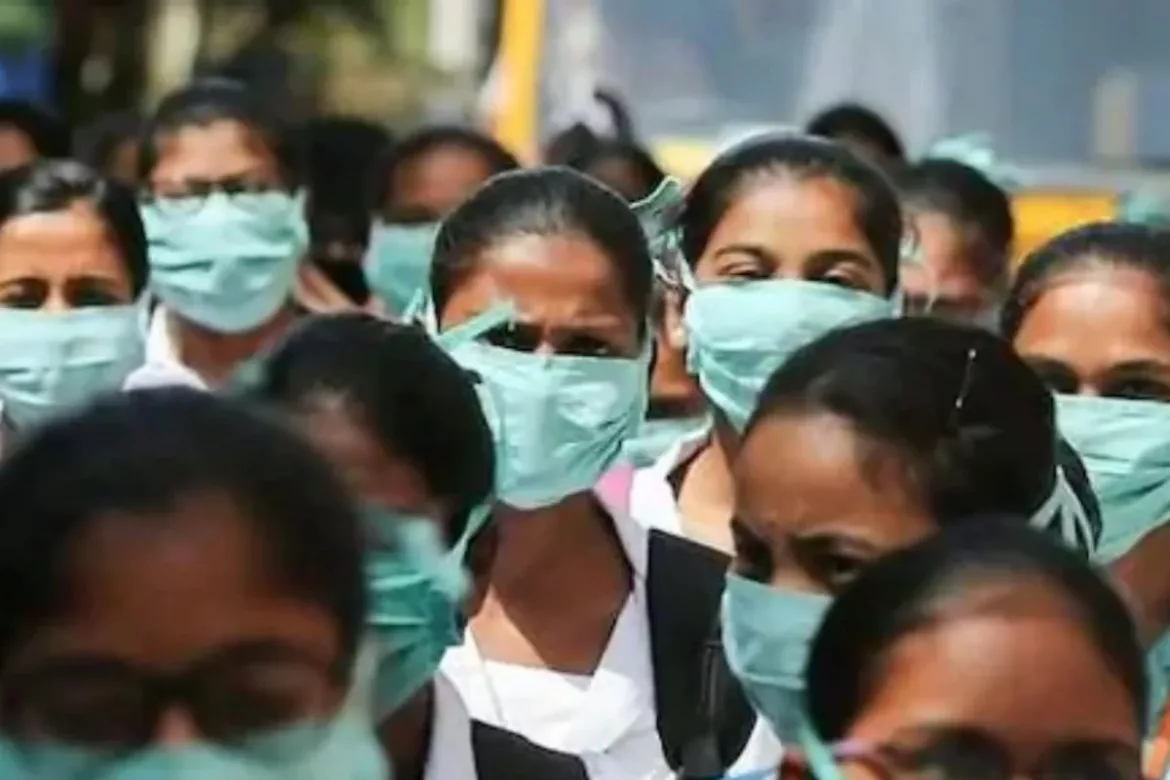India has been able to limit the spread of COVID-19 in comparison to several other countries around the world, but there is no room for complacency as six states are reporting more than 1,000 daily cases of COVID-19 and 181 districts in the country reported a weekly positivity of more than 10% in the week ending July 25, according to official sources on Tuesday.
According to the sources, 107 districts recorded weekly positive ranging from 5% to 10% in the week ending July 25, indicating that the threat of COVID-19 is far from finished.
“Because it is the same virus that is circulating over the world, chances are it will return to India if we do not remain vigilant and take the necessary precautions. This is the difficulty we face “According to a source.
According to officials, India has observed a spike in COVID-19 cases since March, with an average daily case count of 19,627 instances in the last week and a case positivity rate of 4.53 percent.
Between July 20 and July 26, Kerala recorded 2,234 average daily cases, accounting for 11.38 percent of all cases in the country. Following it were Maharashtra, Tamil Nadu, West Bengal, Karnataka, and Odisha. In the previous week, all of these states reported more than 1,000 COVID-19 cases.
During the period, Gujarat, Assam, Telangana, Delhi, Punjab, Himachal Pradesh, and Chhattisgarh recorded 500 to 1,000 average daily cases.
Assam has 26 districts with weekly positivity of more than 10%, followed by West Bengal with 16 for the week ending July 25.
According to the sources, if the trend of cases continues, “we need to be more cautious,” and they emphasised the approach of “test, track, treat, vaccine, and adherence of COVID suitable behaviour.”
They claimed that adult immunisation was carried out on an unprecedented scale.
According to reports, it took 202 days from the commencement of COVID-19 immunisation on January 16, 2021 to reach the milestone of 50 crore doses, and 77 days to reach the milestone of 100 crore vaccine.
The following 50 crore doses were given out in 79 days, and India hit the 200 crore doses milestone on July 17 after 192 days.
According to sources, 96% of the 12-year-old population received the first dosage of COVID-19, 88% received the second dose, and 7.58 crore precaution doses were delivered.
The government has launched COVID Vaccine Amrit Mahotsava to offer free precautionary doses at government facilities, with the goal of increasing precautionary dosage uptake by all eligible people.
People aged 18 and above with a sufficient distance from the last dosage are eligible, and the campaign, which began on July 15, will run until September 30.
Since July 15, there has been a rise in both total dosages and cautionary doses, according to sources.
According to them, India has achieved significant progress in COVID management using a “whole-of-government and whole-of-society strategy.”
They said that Prime Minister Narendra Modi helped the ‘Jan-Andolan’ and ‘Jan-Bhagidari,’ which are critical in the management of any infectious illness.
While 31,193 COVID-19 instances have been documented per million population in India, the worldwide figure is 72,091. In France, the figure is substantially higher (4,96,500) UK (3,46,304) Italy (348,750), Spain (278,074), and the United States (348,750). (2,68,282)
India has reported 374 fatalities per million people, whereas the worldwide figure is 807. The figure is 3,047 for the United States, 2719 for the United Kingdom, and 2246 for France.
According to sources, the first dosage was administered to 1.01 billion qualified recipients in India, which is three times the population of the United States and 6.9 times the population of Russia. They stated that 929.9 million eligible beneficiaries in India had been fully vaccinated, which is 4.3 times the population of Brazil and 13.4 times the population of the United Kingdom.
They also underlined that on PM Modi’s birthday, 2.5 crore vaccination doses were provided in a single day, which is similar to the population of Australia.
According to sources, any sense of complacency or exhaustion in the struggle against COVID-19 must be addressed.





